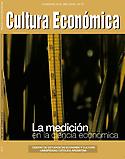Opciones conceptuales, metodológicas y prácticas en la medición de la pobreza: el Informe sobre Pobreza de Irak 2010
Palabras clave:
MEDICION, POBREZA, METODOLOGIA ECONOMICA, INDICADORES, BIENESTAR SOCIALResumen
En el presente trabajo, la autora sostiene que las opciones conceptuales, metodológicas y prácticas involucradas en todo ejercicio de medición de la pobreza tienen consecuencias sobre la estimación de su dimensión, profundidad y estructura. Sin embargo, dichas opciones no están siempre explícitas. El informe de pobreza de Irak de 2010, publicado por el Banco Mundial, representa una excepción en este sentido. La autora propone en este caso, explorar en detalle las opciones subyacentes a la construcción del indicador de bienestar, la línea de pobreza y las medidas de pobreza, señalando la importancia de la explicitación de dichas elecciones.Descargas
Citas
Atkinson, B.A. (1998). Poverty in Europe, Blackwell Publishers, Oxford.
Battiston, D., G. Cruces, L. López Calva, M.A. Lugo y M.E. Santos (2009). “Income and Beyond: Multidimensional Poverty in six Latin American countries”, OPHI Working Paper Series No.17, OPHI.
Deaton, A. (1997), The Analysis of Household Surveys: A Microeconometric Approach to Development Policy, John Hopkins
University Press for the World Bank, Baltimore.
Deaton, A. y A. Tarozzi (2006), “Prices and poverty in India”, in Deaton, A. y Kozel, Data and Dogma: The Great Indian Poverty Debate, Macmillan India, New Delhi.
Deaton, A. y S. Zaidi (2002), “Guidelines for Constructing Consumption Aggregates for Welfare Analysis”, LSMS Working Paper 135, World Bank, Washington.
Feres, J. C. y Mancero, X. (2001), “El método de las necesidades básicas
insatisfechas (NBI) y sus aplicaciones a América Latina”, Series Estudios Estadísticos y Prospectivos, CEPAL –Naciones Unidas.
Foster, J.E., J. Greer y E. Thorbecke (1984), “A Class of Decomposable poverty Indices”, Econometrica, 44(2), pp. 219-31.
Gasparini, L. (2004), “Poverty and Inequality in Argentina: Methodological Issues and a Literature Review”. CEDLAS – World
Bank.
Grootaert, C. y R. Kanbur (1994), “A New Regional Price Index for Cote d”Ivoire using Data from the International Comparison Project”, Journal of African Economies, Volumen 3, No. 1.
Hagenaars, A. y K. de Vos (1987), “The Definition and Measurement of Poverty”, The Journal of Human Resources, XXIII (2), pp. 211-21.
Kedir, A., R. Disney y A. McKay (2003), “Price Deflators and Food Poverty in Urban Ethiopia”, Mimeo, Escuela de Economía, Universidad de Nottingham.
Lanjouw, P. (2009), “Constructing a Consumption Aggregate for the Purpose of Welfare Analysis: Principles, Issues and Recommendations Arising from the Case of Brazil”, Mimeo.
Ravallion, M. (1994), Poverty Comparisons, Harwood Academic Publishers, Londres.
Ravallion, M. y B. Bidani (1994), “How Robust Is a Poverty Profile?”, The World Bank Economic Review, 8, 1, pp. 75-102.
Ruggeri-Laderchi, C., R. Saith y F. Stewart (2003), “Does it Matter that We Do Not Agree on the Definition of Poverty? A comparison of Four Approaches”, Oxford Development Studies, 31, pp. 244-74.
Santos, M.E. y K. Ura (2008), “Multidimensional Poverty in Bhutan:
Estimates and Policy Implications”, OPHI Working Paper Series No.14, OPHI.
Sen, A. (1976), “Poverty: an Ordinal Approach to Measurement”, Econometrica, 52(3), pp. 761-6.
Sen, A. (1985), Commodities and Capabilities, North Holland, Amsterdam.
Sen, A. (1987), “The Standard of Living: Lecture I, Concepts and Critiques”, in G. Hawthorn (ed.), The Standard of Living, Cambridge University Press, Cambridge.
Sen, A. (1993), “Capability and-well being”, in Nussbaum, M.C. y A. Sen (eds.), The Quality of Life, Clarendon Press, Oxford.
Sen, A. (1996), “On the Status of Equality”, Political Theory, 24.
Sen, A. (1999), Development as Freedom, Oxford University Press, Oxford.
Székely, M., N. Lustig, M. Cumpa y J.A. Mejía (2000), “Do we know how much poverty there is?”, Working Paper 437, Inter-American Development Bank, Washington.
World Bank (2010), Confronting Poverty in Iraq, World Bank, Washington.
Descargas
Publicado
Cómo citar
Número
Sección
Licencia













